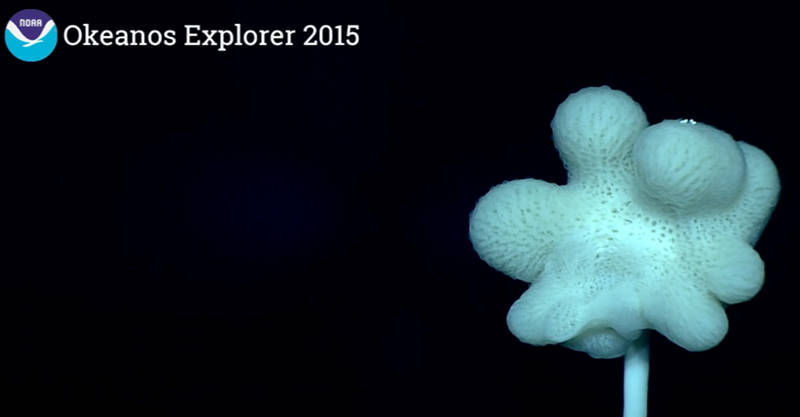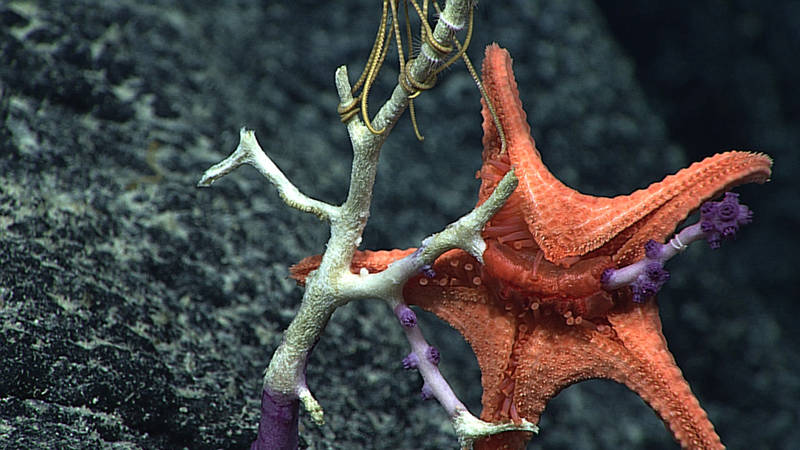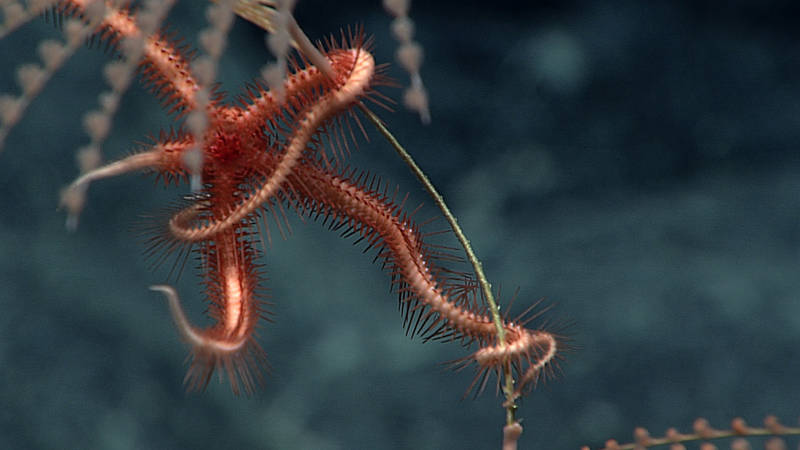
By M. Dennis Hanisak - Research Professor, Florida Atlantic University Harbor Branch
September 23, 2015
This semester, faculty members John Reed, Joshua Voss, Shirley Pomponi, and Dennis Hanisak at Florida Atlantic University’s Harbor Branch Oceanographic Institute (HBOI) are teaching a new graduate course, Ocean Exploration, at the Harbor Branch Exploration Command Center. The goal of the course is to foster graduate student professional development as marine scientists through active participation in a telepresence-enabled oceanographic cruise.
Development and delivery of the course is being supported by NOAA funding to the Cooperative Institute for Ocean Exploration, Research, and Technology (CIOERT) based at Harbor Branch. The course started in August with background lectures that prepared the students for this week’s active participation through real-time telepresence with the NOAA Ship Okeanos Explorer’s 2015 Hohonu Moana: Exploring Deep Waters off Hawaiʻi expedition. Hohonu Moana means "deep ocean" in the Hawaiian language.
The students for this pilot course are: Megan Conklin, Danielle Dodge, Jennifer Polinski (all M.S. students in Biological Sciences at HBOI), and Kimberly Galvez (a Ph.D. student in Geological Sciences at the University of Miami).
Each day this week, cruise participants are exploring the previously uncharacterized deep waters of Johnston Atoll in the Hawaiian Archipelago, part of the recently expanded Pacific Remote Islands Marine National Monument, now known as Pacific Islands Heritage Marine National Monument. During the cruise, each student will develop a semester project and take it from inception through completion and dissemination. Each student will submit a research poster and present it at the CIOERT Student Symposium on December 4.
For this log, each Ocean Exploration student selected a screen shot of an image of interest from the many being made during the cruise.

Megan Conklin: The magnificent glass sponge Caulophacus, also known as the white mushroom sponge, was observed on South Karin Ridge during Leg 4 Dive 9 on the Okeanos Explorer with the Deep Discoverer remotely operated vehicle. This amazing opportunity has enabled us to see new and unchartered areas of the deep ocean as well as observe both familiar and unidentified organisms. Image courtesy of the NOAA Office of Ocean Exploration and Research, 2015 Hohonu Moana. Download larger version (jpg, 228 KB).

Jennifer Polinski: Sea stars have what many might consider unusual eating habits. Rather than ingesting prey through its mouth, a sea star will push its stomach out of its mouth to begin feeding. This process is called eversion and is done so that the starfish can expose prey to digestive enzymes and begin its digestion outside of its body. The stomach will not be pulled back into the sea star’s body until the liquefied food has been absorbed through the stomach lining. This image, taken over 2,500 meters deep, depicts a Circeaster pullus everting its stomach in order to feed on an unfortunate Victorgorgia coral colony. Image courtesy of the NOAA Office of Ocean Exploration and Research, 2015 Hohonu Moana. Download larger version (jpg, 1.3 MB).

Danielle Dodge: Known to be a suspension feeder, the ophiuroid (brittle star) pictured here during Leg 4 Dive 10 is taking advantage of the height of an Iridogorgia coral to reach into an area of higher current for food such as organic material. When living in a sparse area like the deep sea, organisms must adapt to the limited food supply and take advantage of their surroundings when available. The current mission has allowed for further insight into deep-sea interactions and how organisms are able to survive in such harsh conditions. Remote observations allow for scientists to overcome the challenges of depth, pressure, extreme cold, and darkness to explore features of organisms that have never been seen before. Image courtesy of the NOAA Office of Ocean Exploration and Research, 2015 Hohonu Moana. Download larger version (jpg, 1.2 MB).

Kimberly Galvez: Photograph taken from NOAA Ship Okeanos Explorer dives of the basaltic seamount ‘Karin Ridge’ adjacent to the Hawaiian Islands (~160 kilometers southwest of the islands). The hard substrate is made up of pillowed lava flows of encrusted manganese basaltic rock with what is thought to be microbial activity mixed with a sediment deposition matrix that rests on top of the rock. The gross morphology suggests this feature to be a lava tube that may have occurred during the formation of this seamount and was later extruded from its original position. A sponge (possible glass sponge) has attached itself to the lava tube. Light-colored areas indicate areas of sediment deposit and/or microbial activity. Image courtesy of the NOAA Office of Ocean Exploration and Research, 2015 Hohonu Moana. Download larger version (jpg, 756 KB).